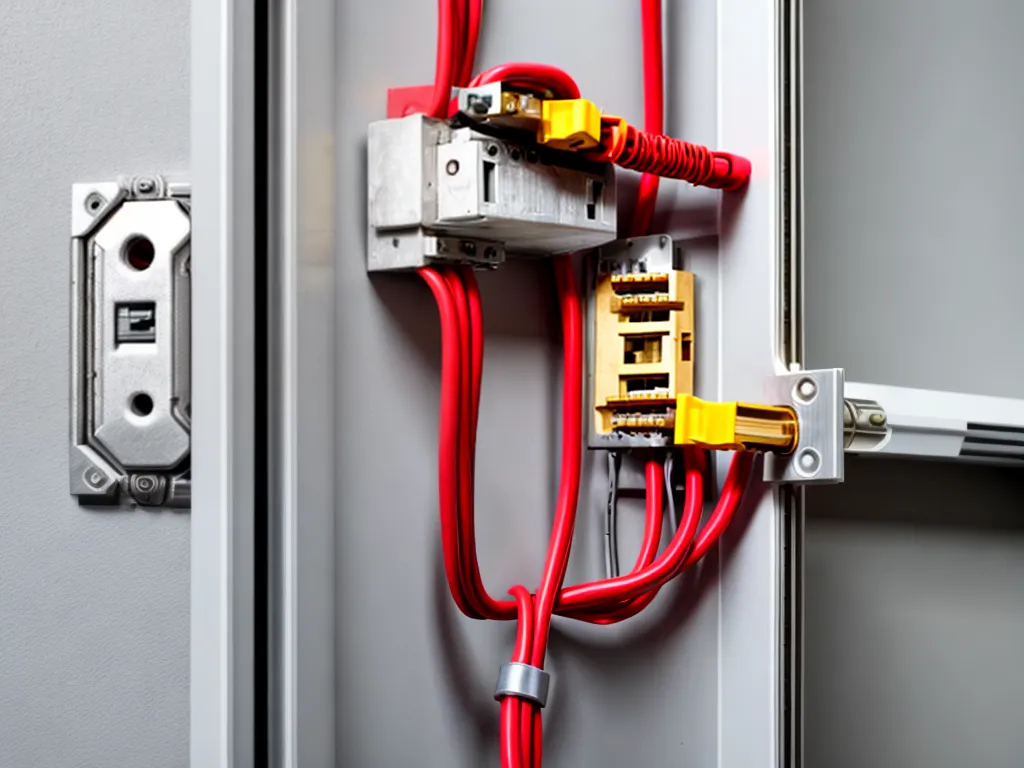
Understanding Aluminum Wiring
Aluminum wiring became popular in American homes in the 1960s and 1970s due to the rising costs of copper. Aluminum is less expensive than copper, but it comes with some potential hazards that homeowners need to be aware of.
The main concern with aluminum wiring is that it expands and contracts more than copper due to temperature fluctuations. This can cause loose connections at outlets and switches, which can lead to overheating, arcing, and even fires. Additionally, aluminum oxidizes over time, forming a surface coating that acts as an insulator. This prevents good electrical contact within wire connections.
However, with the right precautions, aluminum wiring can be used safely in a home. Here's what you need to know.
Inspecting Your Home's Wiring
If your home was built between the mid-1960s and mid-1970s, it's likely that some or all of the electrical wiring is aluminum. The best way to check is to remove the cover plate from an outlet and inspect the wiring.
Aluminum wiring is the color of aluminum and will be labeled "Al." Copper wiring is reddish-orange and labeled "Cu."
Be sure to check outlets and switches in the kitchen, bathroom, laundry room, and other high-use areas. Also check the electrical panel and any appliances, lighting fixtures, or fans that remain from the original construction.
Upgrading Outlets and Switches
The key to safely using aluminum wiring in your home is ensuring solid connections.
I recommend replacing any old outlets and switches with new CO/ALR rated devices. CO/ALR outlets and switches are designed and labeled for use with copper and aluminum wiring.
The connections are more compatible with aluminum and less likely to loosen over time. Any electrician can install these upgraded devices for you.
It's also a good idea to use anti-oxidant paste on connections to prevent the buildup of oxidization.
Using the Right Wiring Connections
When making connections, always use connectors and tools designed for joining copper and aluminum.
Avoid metalized push-in connectors, wire nuts, and back-stab connections. Instead, use compression style connectors, screw-clamp connectors, or pigtails with wire nuts.
Be sure to follow the manufacturer's instructions closely. Applying too much or too little torque when tightening connections can lead to loose wires over time.
Having Your Home Inspected
I strongly recommend having a licensed electrician inspect your entire electrical system if you have aluminum wiring. They can check for any loose connections, properly install CO/ALR switches and outlets, and advise you on any other safety concerns specific to your home.
An inspection is the only way to thoroughly evaluate the condition of aluminum wires and connections. It's a small investment that can prevent major issues down the road.
Doing Regular Maintenance
Get into the habit of checking your electrical outlets and switches frequently. Listen and look for any crackling, buzzing, or flickering which could indicate a faulty connection.
Outlets and switches should not be warm to the touch. If you notice any excess heat, disconnect the device and contact an electrician immediately.
Also have an electrician inspect the entire system every 5 years or so. Routine maintenance is essential for aging aluminum wiring.
Replacing Aluminum Wiring
If you want maximum safety and peace of mind, consider rewiring your home with copper. While expensive, replacing aluminum wiring with copper eliminates the risks of oxidation and loose connections over time.
Many insurance companies even offer discounted premiums to homeowners who rewire with copper.
Staying Safe with Aluminum Wiring
While aluminum wiring requires vigilance, you can use it without risk if you follow safety best practices. Proper connections, CO/ALR rated devices, inspections, and maintenance are key.
With the right precautions, your aluminum wiring can last and perform safely for decades to come. But never ignore warning signs of issues. By taking action quickly, you can prevent fire hazards and protect your home and family.